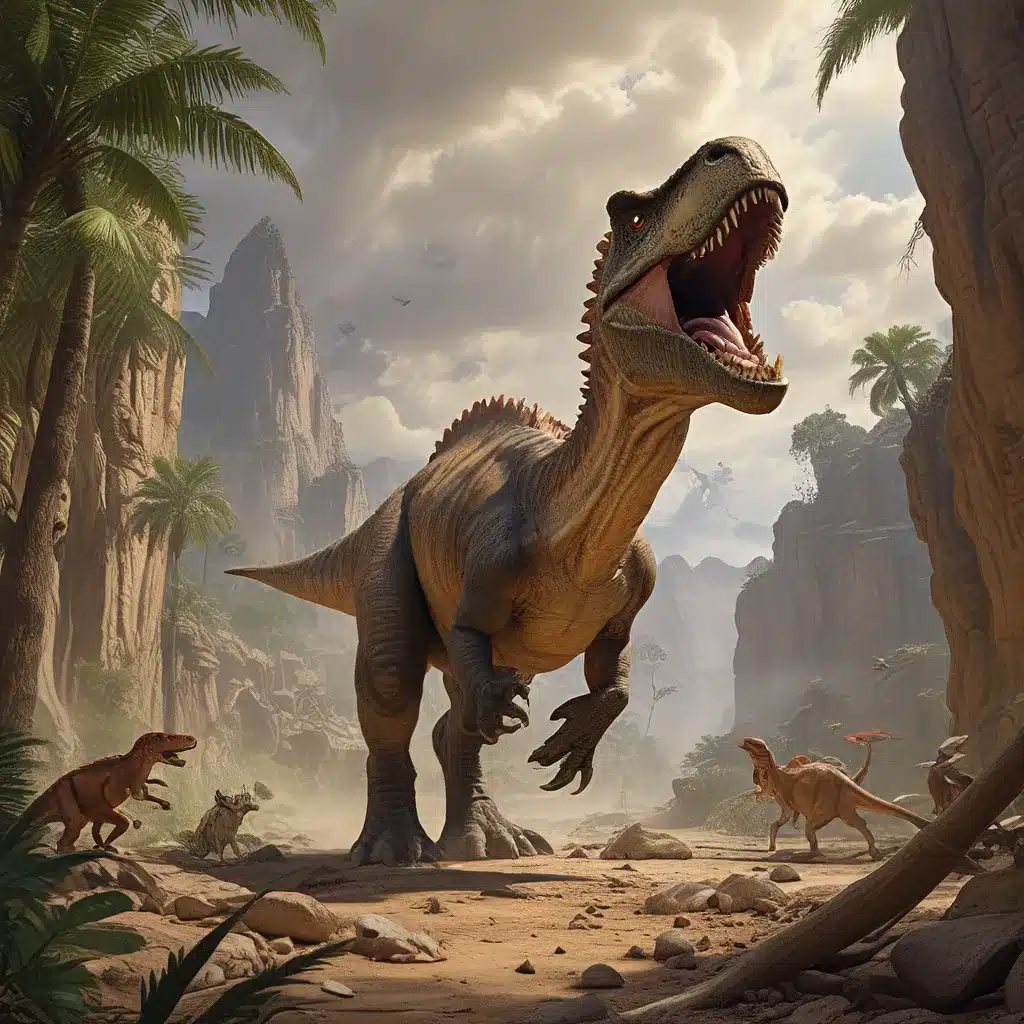
The Cretaceous period, spanning from 145 to 66 million years ago, was a time of unparalleled dominance for dinosaurs. These ancient behemoths roamed the land, ruled the skies, and reigned supreme in the seas, shaping the course of life on Earth in profound ways. Through the lens of modern archaeology and paleontology, we now have an unprecedented understanding of the rise and fall of these mighty dinosaur empires, revealing a captivating saga of evolution, adaptation, and extinction.
Uncovering the Reign of the Dinosaurs
The Cretaceous period was a geological epoch marked by dramatic changes in the Earth’s climate, landmasses, and biosphere. During this time, the continents were still in the process of drifting apart, creating new habitats and niches for an array of prehistoric creatures to thrive. Dinosaurs, in particular, flourished, diversifying into an incredible array of species, each uniquely adapted to its environment.
Paleontological discoveries have shed light on the remarkable adaptations and evolutionary strategies that allowed dinosaurs to dominate the Cretaceous landscape. From the ferocious T. rex and the soaring pterosaurs to the gentle sauropods and the agile raptors, these prehistoric giants exhibited a stunning array of physical traits and behavioral patterns that enabled them to thrive in their respective ecological niches.
The Evolutionary Arms Race
The Cretaceous period was marked by an intensifying evolutionary arms race, as dinosaurs and other prehistoric creatures vied for dominance and survival. This dynamic interplay of predator and prey, predator and scavenger, and herbivore and carnivore, drove the diversification of species and the refinement of their adaptations.
One of the most significant evolutionary developments during the Cretaceous was the rise of avian dinosaurs, the ancestors of modern birds. Feathered dinosaurs, such as the Archaeopteryx, bridged the gap between terrestrial theropods and their airborne descendants, forever changing the composition of the Cretaceous skies.
Similarly, the marine reptiles of the Cretaceous, such as the mosasaurs and plesiosaurs, engaged in an ongoing struggle for dominance in the oceans. These fearsome aquatic predators, along with the giant pterosaurs that ruled the skies, maintained a delicate balance of power in the Cretaceous ecosystem.
The Fall of the Dinosaurs
Despite their formidable adaptations and evolutionary success, the dinosaurs ultimately met their demise at the end of the Cretaceous period, approximately 66 million years ago. The cause of this mass extinction event has been the subject of intense scientific debate and investigation, with various theories proposed to explain this dramatic and abrupt shift in the Earth’s biosphere.
One of the most widely accepted theories is the asteroid impact hypothesis, which suggests that a massive celestial object, such as a comet or asteroid, collided with the Earth, triggering a series of catastrophic events that led to the extinction of the dinosaurs and many other species. This event, known as the Cretaceous-Paleogene (K-T) extinction, not only marked the end of the dinosaur era but also paved the way for the subsequent rise of mammals and the emergence of modern ecosystems.
Unlocking the Secrets of the Cretaceous
The study of the Cretaceous period and its inhabitants has been a long-standing fascination for scientists, historians, and the general public alike. Through the tireless efforts of archaeologists and paleontologists, we have uncovered a wealth of information about the world of the dinosaurs, from their physical characteristics to their behaviors and social structures.
The Lost Kingdoms website has been at the forefront of this exploration, providing a platform for researchers and enthusiasts to share their findings and contribute to our understanding of this captivating era. From the discovery of new dinosaur species to the interpretation of ancient geological formations, this website has become a hub for the dissemination of knowledge and the advancement of our understanding of the Cretaceous world.
Conclusion
The Cretaceous period was a time of remarkable evolutionary dynamism, where dinosaurs rose to unprecedented heights of dominance and power. Through the lens of modern science, we have gained a deeper appreciation for the complexity and resilience of these ancient creatures, as well as the cataclysmic events that ultimately led to their demise.
As we continue to unearth the secrets of the Cretaceous, we are left with a profound sense of awe and wonder at the sheer scale and diversity of life that once graced our planet. The dinosaur empires may have fallen, but their legacy lives on, inspiring us to explore the depths of our own past and to unravel the mysteries of the natural world.


